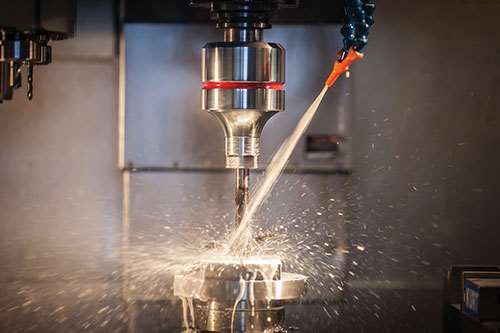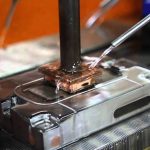Ultrasonic machining (USM)
In USM, material is removed from a workpiece with particles of abrasive that vibrate at high frequency in a water slurry circulating through a narrow gap between a vibrating tool and the workpiece. The tool, shaped like the cavity to be produced, oscillates at an amplitude of about 0.0005 to 0.0025 inch (0.013 to 0.062 millimetre) at 19,000 to 40,000 hertz (cycles per second). The tool vibrates the abrasive grains against the surface of the workpiece, thus removing material. Ultrasonic machining is used primarily for cutting hard, brittle materials that may be conductors of electricity or insulators. Other common applications of USM include cutting semiconductor materials (such as germanium), engraving, drilling fine holes in glass, and machining ceramics and precious stones.
A modified version of the process is ultrasonic twist drilling, in which an ultrasonic tool is rotated against a workpiece without an abrasive slurry. Holes as small as 80 micrometres have been drilled by this type of USM.
Chemical machining (CHM)
This nonelectrical process removes metal from selected or overall areas by controlled chemical action. Masking tape can be used to protect areas not to be removed. The method is related to the process used for making metal printing and engraving plates. Two types of chemical machining processes include chemical blanking, which is used for cutting blanks of thin metal parts, and chemical milling, which is used for removing metal from selected or overall areas of metal parts.
Photochemical machining (PCM)
PCM is an extension of CHM that uses a series of photographic and chemical etching techniques to produce components and devices in a wide range of metals, especially stainless steel.
Water-jet machining
In the water-jet machining process, water is forced through tiny nozzles under very high pressures to cut through materials such as polymers, brick, and paper. Water-jet machining has several advantages over other methods: it generates no heat, the workpiece does not deform during machining, the process can be initiated anywhere on the workpiece, no premachining preparation is needed, and few burrs form during the process. An abrasive is occasionally added to the water to improve the rate of material removal, especially in finishing work. The offshore industry uses seawater as the working fluid when applying this technique.


